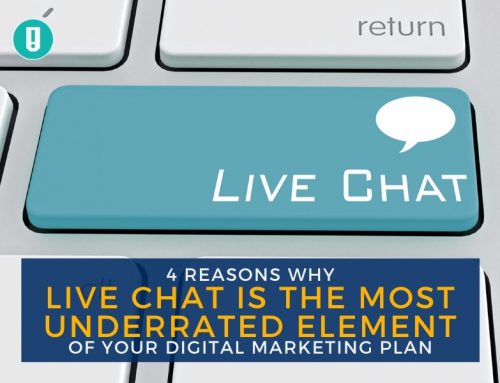When it comes to marketing, the more channels you connect to consumers through, the more customers you’ll get. Today’s consumers — 72% of them anyway, want to connect to brands through multiple channels. It’s up to you to find the channels that your customers frequent. Here’s what you need to know to get started.
1. Not All Channels Are Created Equal.
Social media. Mobile. Email. Ads. These are all viable marketing channels, but that doesn’t mean that they’ll all deliver the same results for your brand.
It’s essential that you deeply understand your customer demographic so that you know which channels they frequent. If you’re trying to reach Millennial consumers, you’d do better using Instagram than LinkedIn, for example.
2. Your Messaging Should Be Consistent.
Whether you’re posting on Facebook about a promotion or sending an email, consistency is key. Those consumers who are connected to your brand across more than one channel expect the same tone and voice in your messaging. Being consistent delivers a cohesive brand awareness for them.
And while you might launch a marketing campaign on one specific channel, it’s better to promote that one campaign across all channels, again, for consistency.
3. Customization Will Get You Better Results.
Today’s consumer doesn’t want to be one of a million people that get a coupon in their email. She wants customized offers tailored to her interests and buying behavior. Using customer relationship management software, you can track her actions and personalize the offers you send her, getting a higher redemption rate than if you sent a generic offer.
4. Drive Loyalty Across Channels.
Creating loyal customers who buy from you repeatedly starts with a lucrative loyalty program. When a shopper is in your store, your cashier should be able to look up her loyalty account through a point-of-sale system or she should be able to scan her phone to access her points.
Keep her updated on her balance and special loyalty offers through email and mobile so that, wherever she is, she’s got access.
5. Measuring Results Helps with Future Campaigns.
The key to success with marketing of any kind is paying close attention to results and then using that data to shape future campaigns. Let’s say you launched a campaign to drive sales of a new product across three social media sites and via email. Check your website analytics to see which channel drove the most traffic to the product’s landing page, and which had the highest number of conversions. That’s the channel you should put more attention on for future campaigns.
You can also glean which kinds of offers drive the most sales. Did the buy one get one free offer see higher conversions than the 30% offer? Even the wording you use in ads and the colors on your website can impact results. As you make changes for future campaigns, change just one element at a time so you know which modification improved results.
6. Provide a Refreshing Mix.
Your online followers, blog readers, and email subscribers want a little variety. Make sure you give it to them. Every post on your blog shouldn’t be 1,000 words of content. Add a video or infographic to mix things up. On social media, have a different focus each day. Maybe on Mondays you reveal an exclusive coupon, on Wednesdays you show photos of a new product, and on Fridays, show behind-the-scenes content that followers can’t get anywhere else.
Again, analytics will tell you what’s working. Test out new types of content or strategies and see how your audience responded.
7. Keep Your Customer at the Center of All You Do.
No matter what marketing channels you use, make sure that it all drives value to the recipient. Don’t post to social media just to be posting; make sure every update entertains or informs your followers.
Make content on one channel exclusive from what you offer on any other. Maybe Instagram followers get a special coupon that you don’t offer anywhere else, or email subscribers get tips on how to use your product.
Omnichannel is no longer an option when it comes to marketing your retail brand. Once you find the channels that your customers spend time on, hone your message until you’re seeing a high conversion rate.
Susan Guillory is the President of Egg Marketing, a content marketing firm based in San Diego. She’s written several business books, and frequently blogs about small business and marketing on sites including Forbes, AllBusiness, and Cision. Follow her on Twitter @eggmarketing.



![Make Product Presentation a Priority [INFOGRAPHIC]](https://www.testsr.com/wp-content/uploads/2020/08/Make-Product-Presentation-a-Priority-INFOGRAPHIC-500x383.jpg)


Leave A Comment